
Best Earth Images of the Month November
A new look
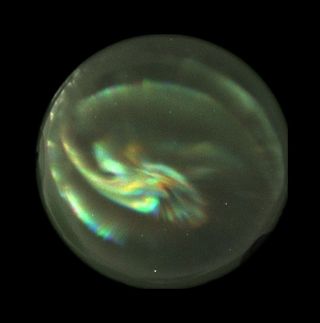
It's quite a treat to get a look at the shimmering, mysterious northern (or southern) lights. But you've probably never seen them like this.
Norwegian researchers have built a new camera that's provided a more detailed glimpse of dazzling auroras than ever before, as it is capable of rapidly capturing and analyzing multiple wavelengths, or colors, of light at the same time.
[Full Story: Camera Gives New Look at Earth's Amazing Auroras]
Stunning lava
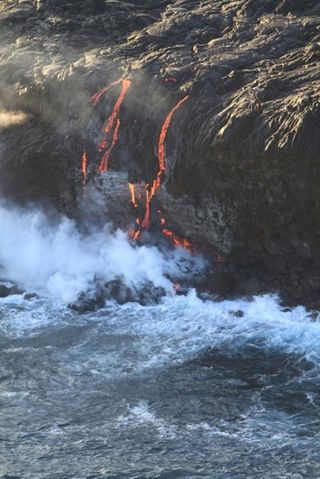
Lava overtopped a seaside cliff in Hawaii this weekend, sending up spectacular steam plumes caught on video and in pictures by a camera crew aboard a helicopter.
The slow-moving stream of molten rock, a sticky form of lava called "pahoehoe," crested the edge around 1 p.m. Hawaiian time on Saturday (Nov. 24), said Ken Hon, a geology professor at the University of Hawaii in Hilo. Hon and his students were accompanying a documentary crew at the site and saw the lava pour over the cliff.
[Full Story: Breathtaking! Watch Fiery Lava Spill into Ocean]
Raining ash
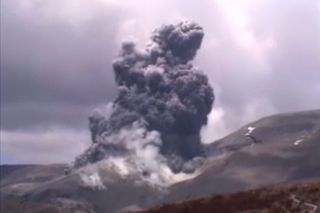
New Zealand's Mount Tongariro volcano erupted for the second time this year on Wednesday (Nov. 21), sending a plume of ash 2.5 miles (4 kilometers) skyward and raising the odds that another eruption is imminent.
Tongariro, one of three active volcanoes that stand over Tongariro National Park in the heart of New Zealand's North Island, lay dormant for more than a century before blowing open its Te Maari crater in August.
[Full Story: New Zealand Volcano Erupts Again, At Risk for More]
Rebuilding underway
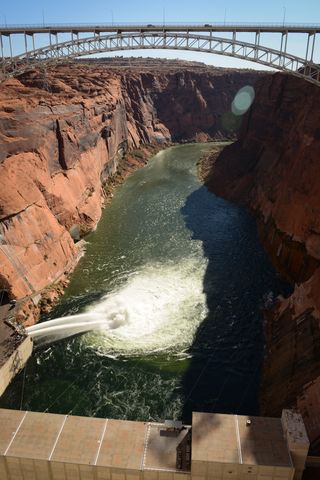
The Colorado River cascaded in a flood from the Glen Canyon Dam Monday (Nov. 19), the first step in an ongoing experiment to rebuild beaches and fish habitat in the iconic Grand Canyon.
Interior Secretary Ken Salazar opened the dam's bypass tubes at noon Mountain Time, releasing a spectacular display of gushing water. The six-day flood started ramping up Sunday night (Nov. 18) at 11 p.m. MT, and the peak-flow of 42,000 cubic feet (1,189 cubic meters) per second is scheduled to last from 9 p.m. Monday night through 10 p.m. on Tuesday, according to a statement from the Bureau of Reclamation.
[Full Story: Grand Canyon Flood Underway to Rebuild Beaches]
Bones exposed
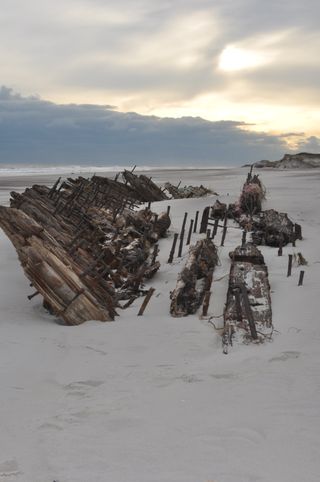
A wrecked schooner long buried on Fire Island a barrier island off of Long Island, N.Y. now lies fully exposed following Hurricane Sandy's attack on the beach.
The weathered hull of the shipwreck lies about 4 miles (6 kilometers) east of Davis Park, between Skunk Hollow and Whalehouse Point, in the Fire Island National Seashore, as first reported by Newsday.
[Full Story: Hurricane Sandy Exposes Fire Island Shipwreck]
Adding insult to injury
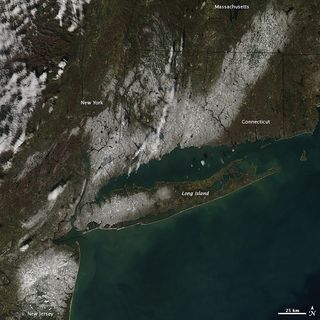
Record snowfalls dumped on parts of the Northeast by a nor'easter last week were seen from space by the Moderate Resolution Imaging Spectroradiometer (MODIS) on NASA's Aqua satellite.
Adding insult to injury in the immediate aftermath of Hurricane Sandy, the nor'easter broke snowfall records across the region, with the most snow in a November storm in Connecticut. In New York's Central Park, 4.7 inches (12 cm) blanketed boulders; and 6 inches (15 cm) fell in storm-battered Newark, N.J. The National Weather Service also reported wind gusts up to 65 mph (105 kph).
[Full Story: Nor'easter Record Snowfall Seen from Space]
Predatory discovery
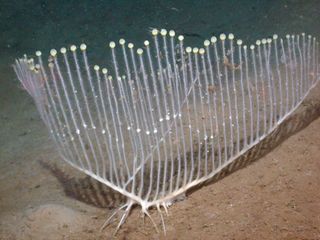
A new carnivore shaped like a candelabra has been spotted in deep ocean waters off California's Monterey Bay.
The meat-eating species was dubbed the "harp sponge," so-called because its structure resembles a harp or lyre turned on its side.
A team from the Monterey Bay Research Aquarium Institute in Moss Landing, Calif., discovered the sponge in 2000 while exploring with a remotely operated vehicle. The sponges live nearly 2 miles (3.5 kilometers) beneath the ocean's surface.
[Full Story: Weird-Looking, Meat-Eating Sponge Found In Deep Sea]
Sign up for the Live Science daily newsletter now
Get the world’s most fascinating discoveries delivered straight to your inbox.











